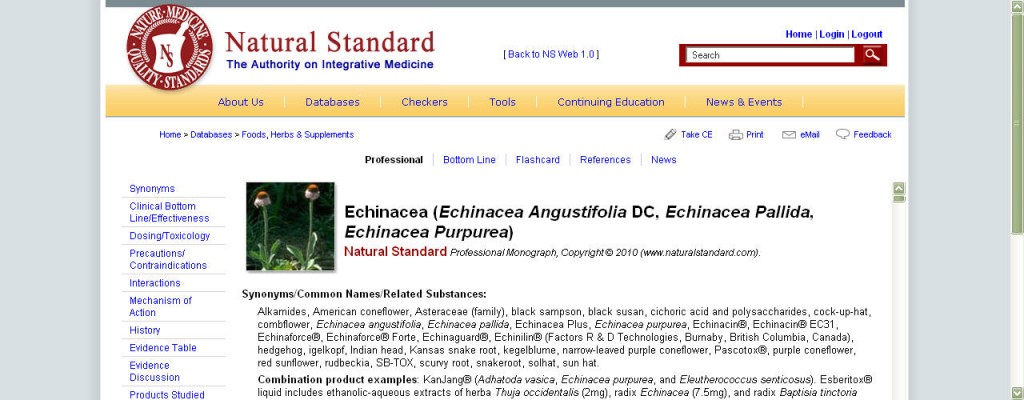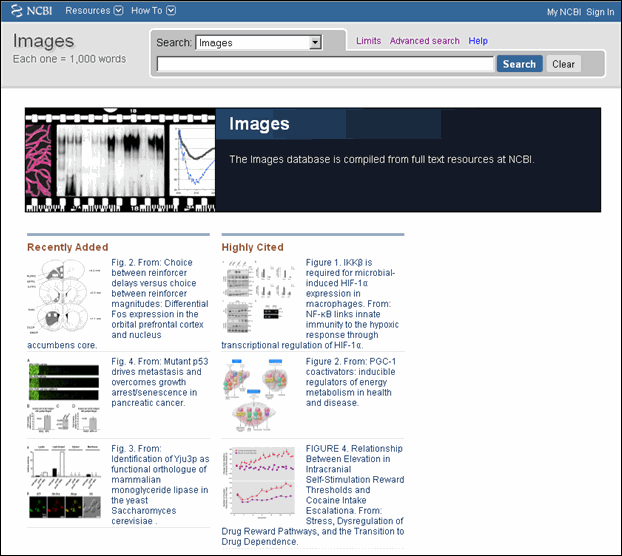PubMed Commons, a new forum community created for online collaboration for ÔÇ£constructive criticism and discussion of scientific issues,ÔÇØ has introduced a pilot version.
During its closed pilot phase, PubMed Commons will be allowing accounts using approved email addresses from PubMed authors to participate. ?áNIH or Wellcome Trust grant recipients can also join and invite others to join. You can test whether you have access here http://www.ncbi.nlm.nih.gov/pubmedcommons/join/. Users will also need a My NCBI account.
Find answers to frequently asked questions on this page: http://www.ncbi.nlm.nih.gov/pubmedcommons/faq/.

The Library is pleased to announce that we now have CINAHL Complete! CINAHL Complete is EBSCOÔÇÖs most comprehensive access point for full-text nursing and allied health literature. It replaces CINAHL Plus with Full Text, but donÔÇÖt worry, you wonÔÇÖt have to learn how to use a new product; the look and functionality are the same. What is different is that now there are more?áfull-text journals?áand indexed titles.?á “How many?ámore?” you ask!?á Well,?áthere are over 550?ámore?áfull-text journals and over 150 additional indexed journals.?á In all, CINAHL Complete includes access to over 1,300 full-text journals and includes indexing for over 5,400 journals. Our subscription also includes over 130 Evidence-Based Care Sheets, 170 Continuing Education Modules, and more. To see a complete list of journals available, you can click on ÔÇ£PublicationsÔÇØ at the top of the CINAHL Complete screen.
?á
LSUHSC-NO faculty, staff, and students can access CINAHL Complete on or off campus. Visit our CINAHL Complete electronic resource page for more information: http://www.lsuhsc.edu/no/library/ss&d/data/cinahl.html.?á?á
Remember, many of the core journals are listed in the library catalog, INNOPAC, and you can link directly to a journal?áand browse available issues from there, too.?á And all these journals are listed in our EBSCO A to Z list.
For further assistance searching CINAHL Complete, contact a reference librarian on duty.
The LSUHSC Libraries support Dynamed, a point of care database that provides the best available evidence to support clinical decision-making.?á DynaMed is?áa comparable product to UpToDate and much more affordable.
While the?áLSUHSC New Orleans Libraries were never involved in the UpToDate subscription and had no access, we are hearing that it is no longer available from various hospital websites. We suggest you try DynaMed as the alternative.
Our next installment of 2 Minute Tips reveals the steps to access a database like PubMed or CINAHLplus with full text when you are off campus.
View VIDEO: Accessing databases off campus
2 Minute tips is a blog series where we bring you short video tutorials on various tools and resources in the library.
You can now register the same Dynamed serial number on up to 5 devices of the same operating system.
From Skyscape:
For example, if you have registered DynaMed on your iPhone, you can install it to your iPad using the same serial number. When you install Skyscape/DynaMed on the iPad, all of the resources that were registered to your iPhone are automatically installed. This behavior will also apply to the Android and BlackBerry platforms.
Serial numbers have a shelf life of one year, regardless of how many devices on which it is registered. Contact the library for a new serial number if Dynamed has stopped working for you.
Dynamed provides clinically-organized summaries with references for nearly 3,200 diseases and condition topics and over 800 drugs. It is available free to faculty, staff and students of LSUHSC.
RefWorks your web-based reference manager is getting a new look. If you have already created Refworks personal databases, please convert to the RefWorks 2.0 as soon as possible and take advantage of the cleaner, more intuitive interface. Not familiar with Refworks? Create a new log-in (free) and begin managing your references with RefWorks 2.0.
RefWorks 2.0 allows you to manage your references anywhere you have access to the Internet!
You can:
ÔÇó Search PubMed (within RefWorks)
ÔÇó Directly import your selected PubMed citations
ÔÇó Store your references in folders (including attaching the full-text of the article)
ÔÇó Share your references with your collaborators
ÔÇó Add your references as you type a paper (write-n-cite)
ÔÇó Create and format bibliographies in the citation style you need
Try the RefWorks 2.0 tutorial to get a glimpse of what you can do to get organized.
For more information about RefWorks 2.0 and other super cool ways to gather your references including searching SCOPUS and directly exporting citations to your RefWorks account contact Kathy Kerdolff.
To switch between old and new versions, simply use the links at the top right of the screen. RefWorks 1.0 will be available through December 2011.

Old RefWorks Design

New RefWorks Design
Rehabilitation Reference Center is a wide-ranging collection of evidence-based rehabilitation resources for rehabilitation clinicians, physical therapists and occupational therapists to personalize and print at the point-of-care.
Users can locate information by doing a simply keyword search or by browsing through pre-determined topics such as ÔÇ£Diseases & Conditions,ÔÇØ ÔÇ£Drug Information,ÔÇØ ÔÇ£Patient Education,ÔÇØ ÔÇ£Exercise ImagesÔÇØ and ÔÇ£Practice Resources.ÔÇØ Users will also find Key Features and up-to-date Health News from on the homepage.
LSUHSC faculty, staff and students can access RCC off campus with use of a valid LSUHSC library barcode & PIN. You can find a link to this resource from the LibraryÔÇÖs Online Resource page.
The LSUHSC Libraries provide access to Exam Master, an online resource that helps students prepare for exams. Exam Master includes USMLE and NBDE practice tests, as well as medical subject reviews.
First time users must create an Exam Master username and password.
Username is your lsuhsc email address.
Password is one you create.
Natural Standard, an online database with evidence-based information about complementary and alternative therapies, has redesigned their website.
Natural Standard offers a variety of tools, including graded analysis reflecting the level of available scientific data for or against the use of therapies for a specific medical conditions, a symptom checker/differential diagnosis tool, medical calculators and patient handouts. “Bottom line” analyses offer succinct summaries on public health topics, genomics & proteomics, sports medicine and medical conditions.

Drug monograph from Natural Standard
A
mobile version is available via Skyscape.com for most devices. It is free for LSUHSC students, faculty and staff. It offers consolidated information on effectiveness, side effects, interactions, dosing, pregnancy, breastfeeding, historic background, practitioner accreditation, theory, and safety on a variety of drugs and natural therapies. Email mknapp@lsuhsc.edu for a serial number and installation directions.
Natural Standard can be found under Online Resources – N on the library homepage. It is available on and off campus.

The Images database is compiled from full text resources at NCBI.
There’s a new free images database available from NCBI (the National Center for Biotechnology Information, aka the folks that bring you PubMed). Imaginatively entitled Images, it allows users to search millions of scientific images from NCBI full text resources, including images from journals in PubMed Central. Search with terms or detailed search parameters, such as image height, width, and caption. Try “squamous cell skin cancer” for some fun results.
You can access images from the Database drop down menu in PubMed, directly at http://www.ncbi.nlm.nih.gov/images
*Edit* July 2011 This database is no longer available from NCBI. Try searching under PubMedCentral and images will be on the right side of the screen.
The National Library of Medicine (NLM) recently launched a new digital repository that is entitled Digital Collections. This free online database provides access to biomedical books and videos, which are an important part of the NLMÔÇÖs interesting history.
The content in Digital Collection is in the public domain and is available worldwide. You can also find a link to this database through the libraryÔÇÖs Online Resources. Enjoy!
Are your library skills a little rusty? Come to one of our General Library Orientation classes and learn about the our resources, how to search the online catalog and PubMed, and how to request an Interlibrary Loan. The schedule is now posted for October-December. Contact Carolyn Bridgewater for more information.
Have you ever wondered about the potential health effects of chemicals used in common household products? Or possibly been curious what chemicals have tested positive as cancer-causing agents?
If so, The National Library of Medicine provides TOXNET (TOXicology Data NETwork) as a product of their Toxicology and Environmental Health Information Program.
This ÔÇ£FREE web-based integrated system of databasesÔÇØ is ideal for Health Care Professionals or health-conscious consumers searching for reliable information on ÔÇ£environmental health, hazardous chemicals, toxic releases, chemical nomenclature, and specialty areas such as occupational health and consumer products.ÔÇØ
The five types of informative databases are as follows:
1) Chemical Information- ChemIDPlus
2) Toxicology Data Files
a. HSDB (Hazardous Substance Data Bank)
b. CCRIS (Chemical Carcinogenesis Research Information)
c. GENE-TOX (Genetic Toxicology)
d. IRIS (Integrated Risk Information System)
e. ITER (International Toxicology Estimates for Risk Assessment)
f. LactMED (Database of drugs and other chemical and the possible effects in nursing infants)
3) Toxicology Literature Files (bibliographic references)
a. TOXLINE (TOXicology Literature onLINE)
b. DART (Developmental and Reproductive Toxicology)
4) Toxic Releases
a. TRI (Toxic Release Inventory)
b. TOXMAP (Environmental Health e-Maps)
5) ÔÇ£Other DatabasesÔÇØ
a. Haz-Map (Occupational Health Database)
b. Household Products (Information on potential health effects of more than 2,000 ingredients found in common household products)
The CRISP database has been replaced with RePORT.
This NIH database kept all the CRISP features and added these:
Hit lists can be sorted and downloaded to Excel.
NIH funding is displayed for each project.
Publications as a result of support from a project contain links to PubMed.
To check out LSUHSC – New Orleans active grants use: LOUISIANA STATE UNIV HSC NEW ORLEANS in the Organization search box.

 myLSUHSC
myLSUHSC


